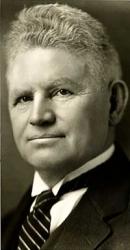1783 - 1824 Author of "Lord, Teach This Little Child to Pray" in The Children's Hymnbook Taylor, Jane, the younger of two sisters, was born at London, Sept. 23, 1783. Her gift in writing verse displayed itself at an early age. Her first piece was printed in the Minor's Pocket Book for 1804. Her publications included Display, a tale, 1815; Essays in Rhymes, 1816; and the posthumous work edited by her brother, entitled The Contributions of Q. Q., 1824, being pieces in prose and verse from the Youth's Magazine, to which she had contributed under the signature of "Q. Q." She died at Ongar, Essex, April 13, 1824. Her Memoir and Poetical Remains, were published by her father in 1825.
The joint productions of the two sisters, Ann Taylor Gilbert & Jane Taylor, were:-- (1) Original Poems, 1805; (2) Hymns for the Nursery, 1806; (3) Hymns for Infant Minds, 1809; 2nd edition 1810; 52nd edition 1877. To the 35th edition, 1844, Mrs. Gilbert interspersed 23 additional hymns by herself, thereby raising the total to 93. In 1886 Josiah Gilbert revised these hymns, added thereto from the works named above, supplied the initials "A." and "J." respectively, and published the same under the original title as the Authorized Edition." (4) Original Hymns for Sunday Schools, 1812.
In addition to the hymns which are noted under their respective first lines, Miss Taylor is the authors of the following (the date in brackets indicates the book in which each hymn appeared):—
1. A sinner, Lord, behold I stand (1809). A Child's Humble Confession.
2. Almighty God, Who dwellest high (1809). Praise to God.
3. Come, my fond, fluttering heart (Collyer's Collection 1812). Renunciation of the World.
4. God is so good that He will hear (1809). Encouragement to Pray.
5. God!—What a great and awful name (1809). God's Condescension.
6. How dreadful to be turned away (1812). Expulsion from Sunday School.
7. Lord, I would own thy tender care (1809). Thanks for Daily Mercies.
8. Love and kindness we may measure (1809). Against Selfishness.
9. Now condescend, Almighty King (1809). Evening Hymn for a Small Family.
10. This is a precious book indeed (1809). Holy Scripture.
11. What is there, Lord, a child can do? Repentance.
12. When daily I kneel down to pray (1809). Against wandering thoughts in Prayer.
13. When for some little insult given (1809). Against Anger, &c.
14. When to the house of God we go (1809). Public Worship.
Mr. Gilbert's edition of the Hymns for Infant Minds, 1886, together with manuscript notes, are our authorities for the foregoing ascriptions of authorship. Mr. Gilbert cannot distinguish the authorship of the following hymns by one or both sisters:—
1. Good David, whose Psalms have so often been sung (1812). Concerning David.
2. If Jesus Christ was sent (1812). Repentance.
3. King Solomon of old (1812). Concerning Solomon.
In literary excellence Mrs. Gilbert's hymns surpass those of her sister. They are more elevated in style, ornate in character, broader in grasp, and better adapted for adults. The best are "Great God, and wilt Thou condescend?", "Jesus, Who lived above the sky," and "Lo! at noon 'tis sudden night." Miss Taylor's hymns are marked by great simplicity and directness. The most popular and one of the best is, "There is a path that leads to God." Taken as a whole, her hymns are somewhat depressing in tone. They lack brightness and warmth.
--Excerpts from John Julian, Dictionary of Hymnology (1907)
Jane Taylor


 My Starred Hymns
My Starred Hymns



